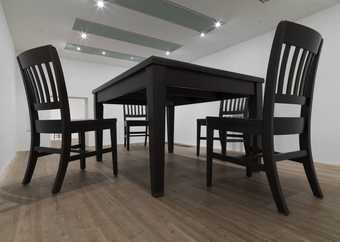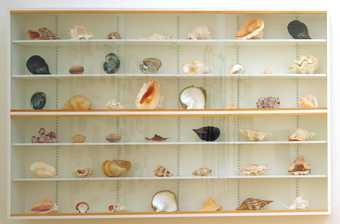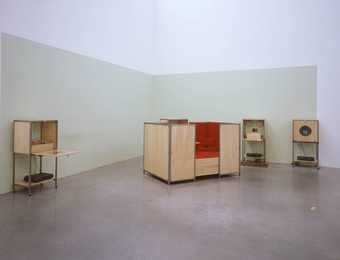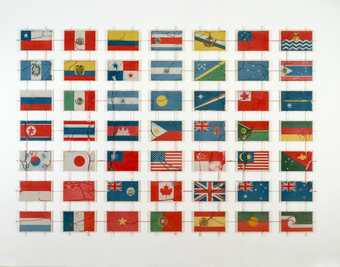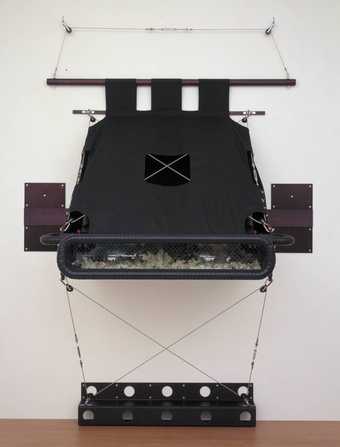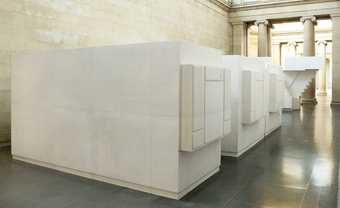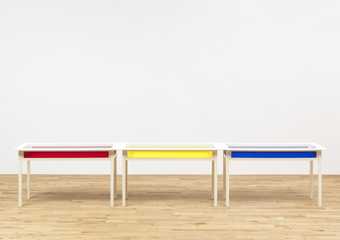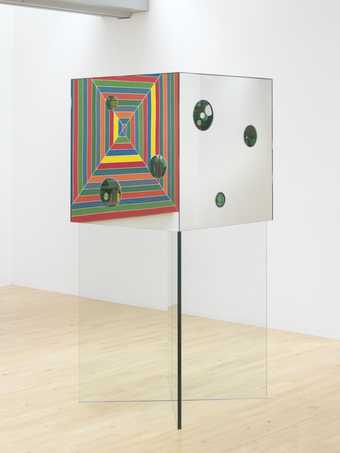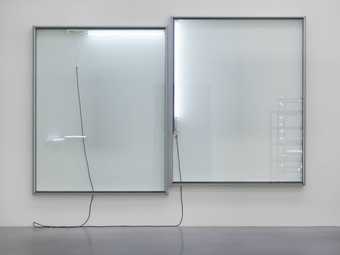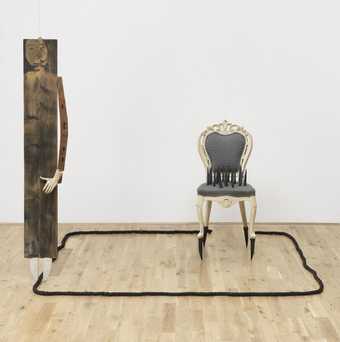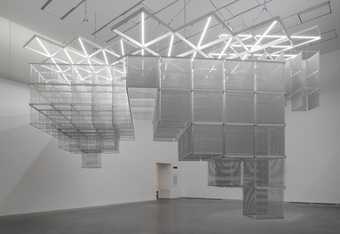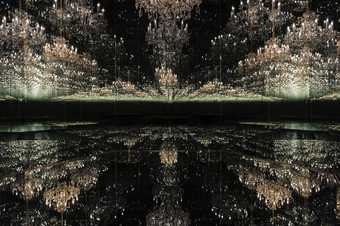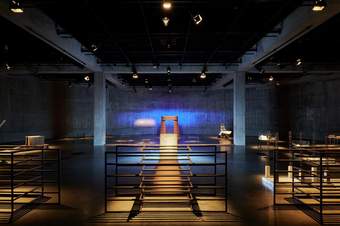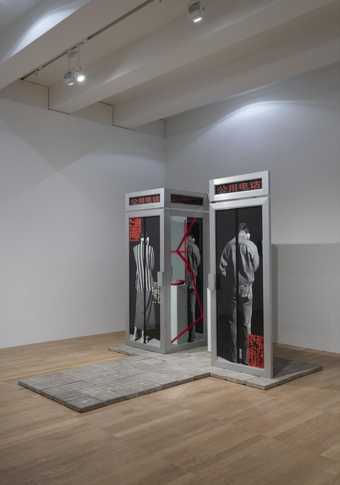In Tate Modern
- Artist
- Yayoi Kusama born 1929
- Medium
- Mirrored glass, wood, aluminium, plastic, ceramic and leds
- Dimensions
- Unconfirmed: 2955 × 6224 × 6224 mm
- Collection
- Tate
- Acquisition
- Presented by the artist, Ota Fine Arts and Victoria Miro 2015, accessioned 2019
- Reference
- T15206
Summary
Infinity Mirrored Room – Filled with the Brilliance of Life 2011 is a room through which visitors pass on a walkway made of mirrored tiles. The walls and ceiling of the room are also mirrored, and the floor surrounding the walkway is covered with a shallow pool of water. Hanging from the ceiling are hundreds of small, round LED lights that flash on and off in different colour configurations on a timed programme. The pinpricks of light in the otherwise darkened room appear to reflect endlessly in the mirrors and the water, giving the viewer the experience of being in a seemingly endless space. The work was made specifically for the artist’s retrospective exhibition Yayoi Kusama held at Reina Sofia, Madrid, Centre Pompidou, Paris, Tate Modern, London, and the Whitney Museum of American Art, New York, in 2011 and 2012. It was the largest mirror installation she had made up to that date. As the second part of the work’s title suggests, it seeks to visualise life as a ‘brilliant’ experience. The work exists in an edition of three of which this version owned by Tate is number one.
Kusama first used mirrors in the mid-1960s in her large-scale installations Infinity Mirror Room – Phalli’s Field 1965 and Kusama’s Peep Show – Endless Love Show 1966. Although these early works presented a more sexually oriented language, the way in which the viewer became part of the phenomenological environment, experiencing endlessly multiplied forms, is comparable to the much later Infinity Mirrored Room. Kusama has underlined the importance of the role the viewer plays in her rooms and how he or she continually experiences the work in a new way: ‘One is more aware than before that he himself [the viewer] is establishing relationships as he apprehends the object from various positions and under varying conditions of light and spatial context … For it is the viewer who changes the shape constantly by his change in position relative to the work’ (quoted in Applin 2012, p.37).
Kusama has been fascinated with ideas of endlessness in space and vision throughout her career. Her work, executed across a range of media, is characterised by its investigation of pattern, repetition and accumulation. From childhood Kusama suffered from anxiety and hallucinatory episodes, often in the form of nets or spots multiplying to dominate her field of vision. Forms from these hallucinations became the basis of her visual vocabulary. Early in her career, she began covering different surfaces – including walls, floors, canvases, objects, animals and people – with polka dots, which became a trademark of her work. Her large-scale environments, such as Infinity Mirrored Room, combine this hallucinatory motif with an ongoing concern with perspective, space and optical experience. The work exemplifies Kusama’s examination of repetition and infinity, while the interactive character of the room is typical of the way in which her practice engages the viewer directly, breaking down boundaries between subject and object.
Further reading
Yayoi Kusama, exhibition catalogue, Tate Modern, London 2012, pp.153, 182–3, 185, 189.
Jo Applin, Yayoi Kusama: Infinity Mirror Room – Phalli’s Field, London 2012.
Lena Fritsch
April 2015
Does this text contain inaccurate information or language that you feel we should improve or change? We would like to hear from you.
Display caption
Entering this installation, you move along a reflective walkway over a shallow pool. Around you, tiny dots of light are repeated endlessly in the mirrors and water. The lights pulse, like a heartbeat or a ticking clock. Even while we experience infinite space, we are made aware of time passing.
The effects Kusama creates relate to her own visual hallucinations. Kusama has experienced these from early in her life. In them she becomes ‘obliterated’ by repeated dots. Here she invites us to share this ‘self-obliteration’. The dots surround and engulf you, making it hard to tell where you end and where the rest of the room begins. Usually, when we experience art, there’s a clear distinction between us and the artwork. But Kusama confuses this on purpose. To experience her mirror rooms, she asks us to become part of them.
Gallery label, April 2021
Does this text contain inaccurate information or language that you feel we should improve or change? We would like to hear from you.
Features
You might like
-
Robert Therrien No Title (Table and Four Chairs)
2003 -
Damien Hirst Forms Without Life
1991 -
Andrea Zittel A-Z Comfort Unit with Special Comfort Features by Dave Stewart
1994–5 -
Yukinori Yanagi Pacific
1996 -
Tomoko Takahashi Drawing Room
1998 -
Ashley Bickerton Biofragment #2
1990 -
Rachel Whiteread Untitled (Rooms)
2001 -
Langlands & Bell (Ben Langlands and Nikki Bell) Adjoining Rooms
1989 -
Yayoi Kusama The Passing Winter
2005 -
Pedro Cabrita Reis Unframed #3
2008 -
Yun Suknam Being Restricted I
1995 -
Yayoi Kusama Chandelier of Grief
2016/2018 -
Vivan Sundaram Memorial
1993–2014 -
Xiao Lu Dialogue
1989, remade 2015


